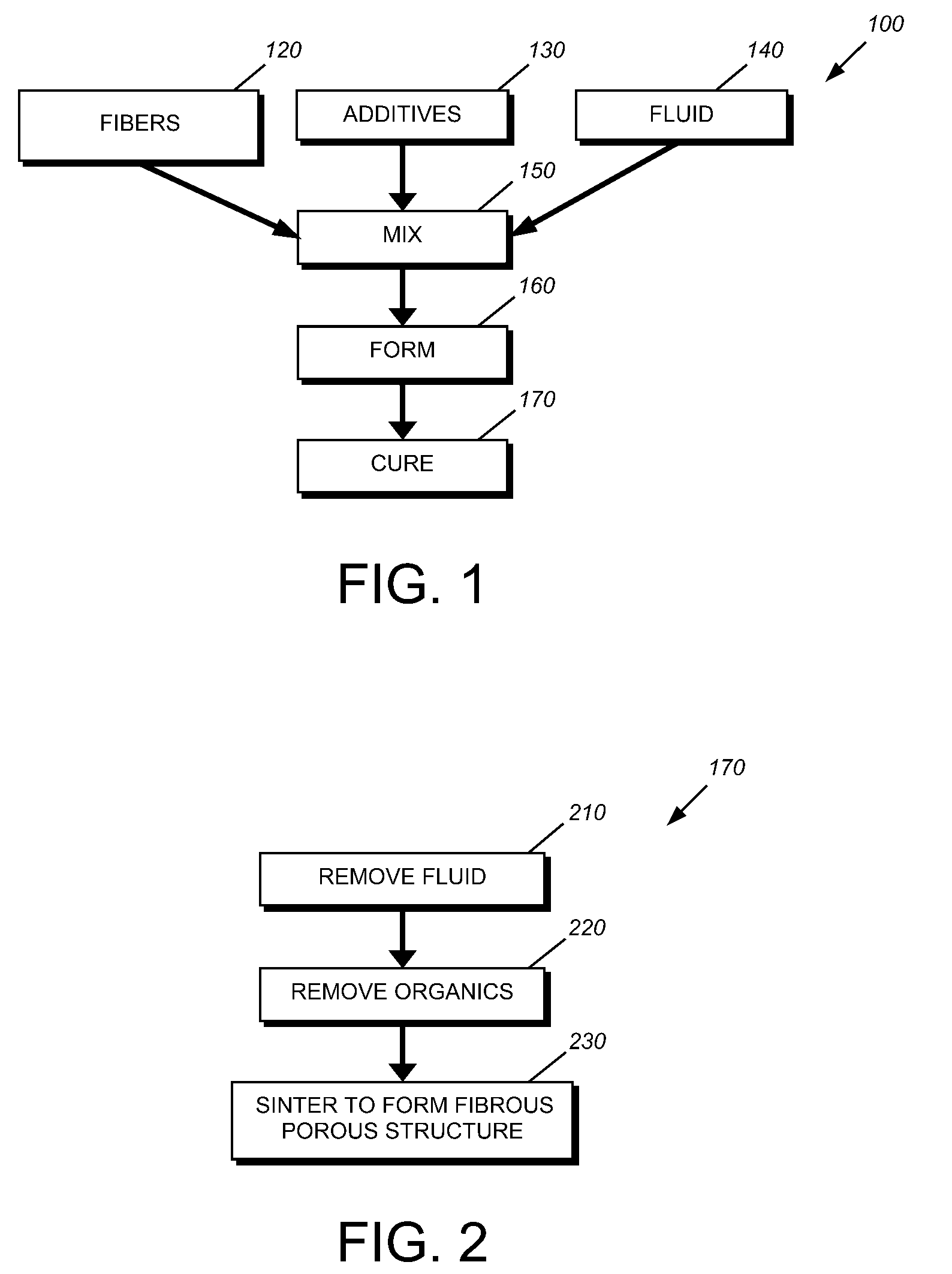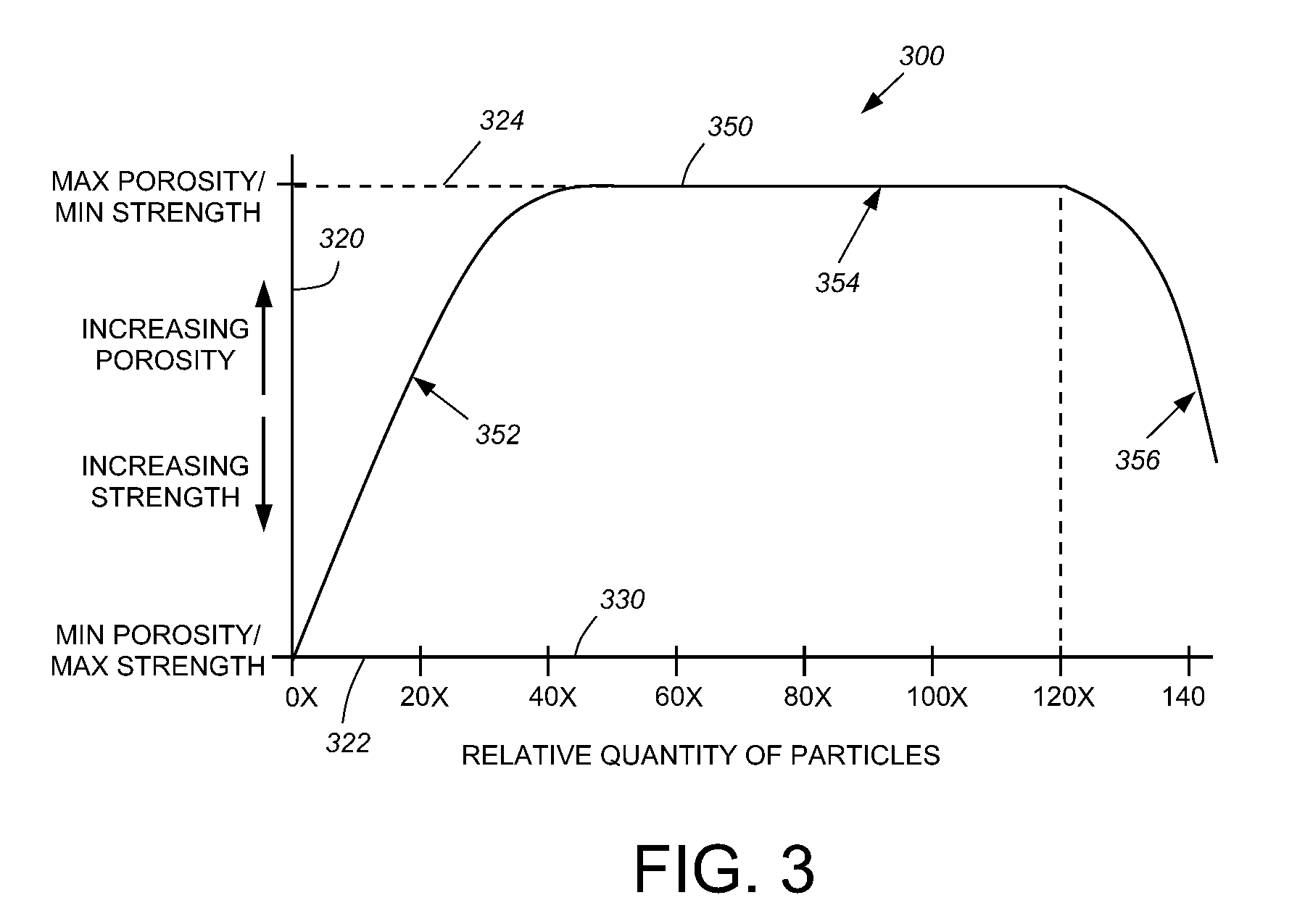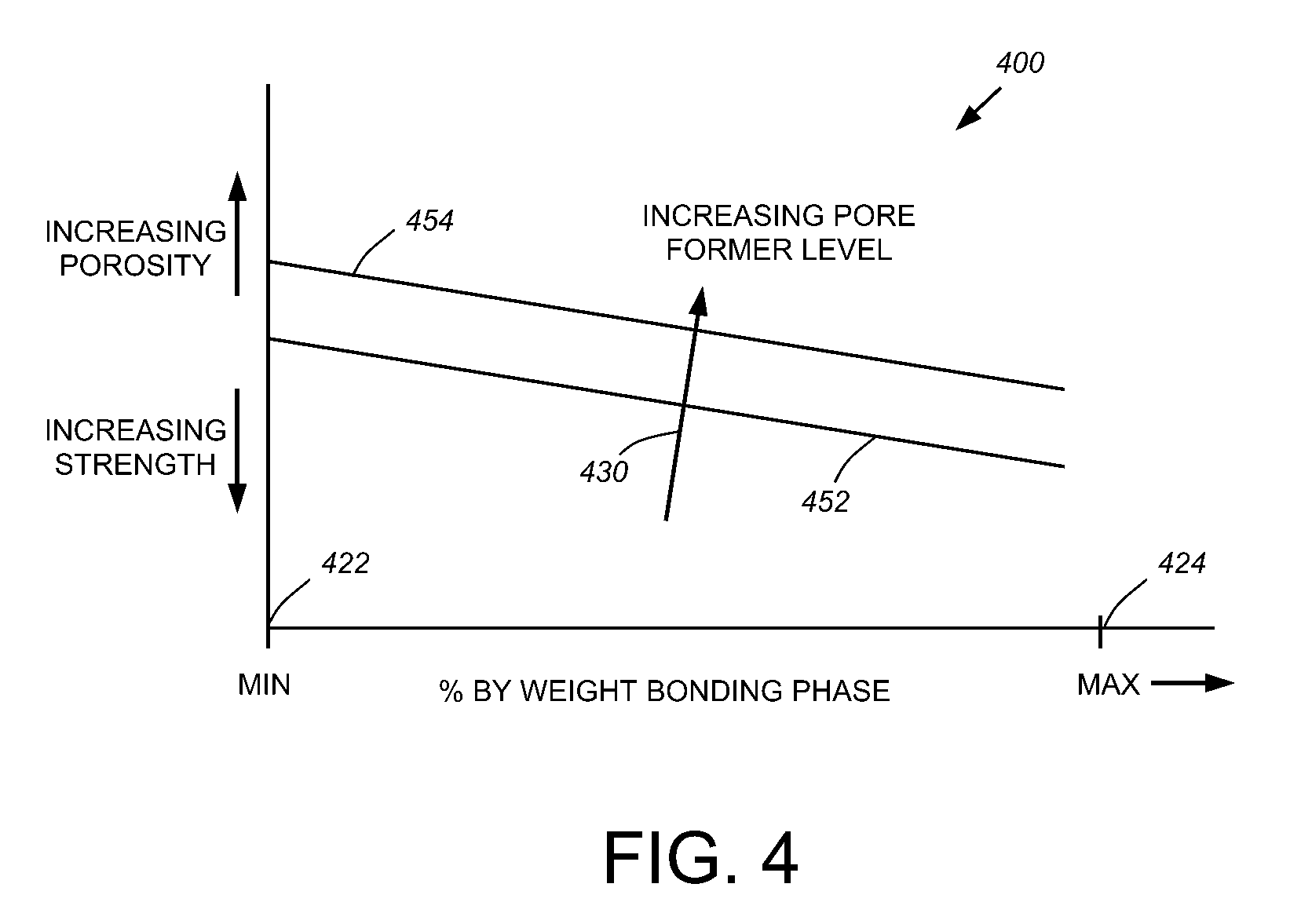System and Method for Fabricating Ceramic Substrates
a technology of ceramic substrates and systems, applied in the direction of machines/engines, filtration separation, separation processes, etc., can solve the problems of unavoidable trade-off between porosity and strength, and achieve the effect of optimizing strength and porosity performan
- Summary
- Abstract
- Description
- Claims
- Application Information
AI Technical Summary
Benefits of technology
Problems solved by technology
Method used
Image
Examples
Embodiment Construction
A. Overview of Substrate Fabrication
[0036]By way of further background, and referring to FIG. 1, a procedure 100 for fabricating a fiber-based substrate according to the present invention is shown. Similar fabrication processes are disclosed in commonly-assigned patent applications, including U.S. patent Ser. No. 11 / 831,398 entitled “A fiber based ceramic substrate and method of fabricating the same,” and U.S. patent Ser. No. 11 / 323,429, entitled “An extruded porous substrate and products using the same,” both of which are incorporated herein by reference. Generally, fibers 120, with additives 130 and a solvent fluid (typically water) 140, are mixed 150 into a plastic batch that is formed into a green substrate 160 and fired / cured 170. Note that various embodiments of the substrate can be fabricated to form fiber-based substrates having alternative compositions using any number of different fiber compositions, additives, and solvents. In an exemplary embodiment, mullite fiber can be...
PUM
| Property | Measurement | Unit |
|---|---|---|
| particle size | aaaaa | aaaaa |
| particle size | aaaaa | aaaaa |
| temperature properties | aaaaa | aaaaa |
Abstract
Description
Claims
Application Information
 Login to View More
Login to View More - R&D
- Intellectual Property
- Life Sciences
- Materials
- Tech Scout
- Unparalleled Data Quality
- Higher Quality Content
- 60% Fewer Hallucinations
Browse by: Latest US Patents, China's latest patents, Technical Efficacy Thesaurus, Application Domain, Technology Topic, Popular Technical Reports.
© 2025 PatSnap. All rights reserved.Legal|Privacy policy|Modern Slavery Act Transparency Statement|Sitemap|About US| Contact US: help@patsnap.com



